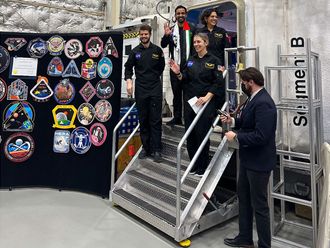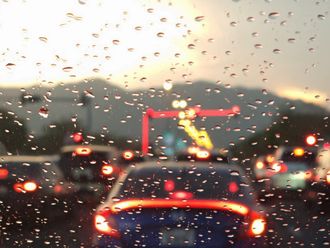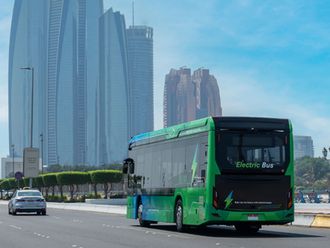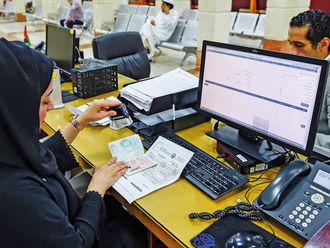
Dubai: The UAE’s second astronaut Sultan Al Neyadi, who is on the longest Arab space mission on the International Space Station (ISS), is all set to embark on his riskiest job that will make him the first Arab to spacewalk on Friday, April 28.
The 41-year-old former Network Engineer with the UAE Armed Forces, whose full name is Sultan Saif Hamad Al Neyadi, is scheduled to venture into outer space tomorrow to perform the first spacewalk by an Emirati, achieving a new milestone in the country’s space exploration.
The father-of-five from Al Ain will make the UAE proud again as his Extravehicular Activity (EVA) outside the space station will make the UAE the 10th nation in the world to achieve the feat.
As the entire country waits to watch the ‘Sultan of Space’ float in the vacuum of space in his bulky ISS spacesuit called the Extravehicular Mobility Unit (EMU), Gulf News gives you all the details that you need to know about the historic space event.
Al Neyadi in high spirits
On Thursday evening, Al Neyadi shared latest images of him and his spacewalk colleague, NASA flight engineer Stephen Bowen, all suited up in their bulky spacewalk suits.
“Tomorrow [April 28], Steve Bowen and I will do a spacewalk outside the ISS to change the Radio Frequency Group unit and prepare for the installation of solar panels. After a long period of training, we are ready to take on the challenge and create a new milestone for our mission,” he tweeted.
When is his spacewalk?
Al Neyadi’s historic spacewalk along with the NASA astronaut Stephen Bowen is scheduled to take place from 5.15pm in the UAE on Friday. It is expected to last for about six and a half hours.
How can one watch it?
The Mohammed Bin Rashid Space Centre (MBRSC) in Dubai will provide live coverage of the historic space event on its website from 4.30pm here. On Thursday, the agency behind the UAE Astronaut Programme sent out an SMS to residents to watch the live coverage of the UAE’s “journey towards a new milestone in space exploration.” MBRSC also urged space aficionados to take part in this historic milestone using the hashtag #UAEspacewalk on social media.
What is a spacewalk?
Any time an astronaut gets out of the space station or a space shuttle into the vacuum of space, it is called a spacewalk. A spacewalk is also called an EVA.
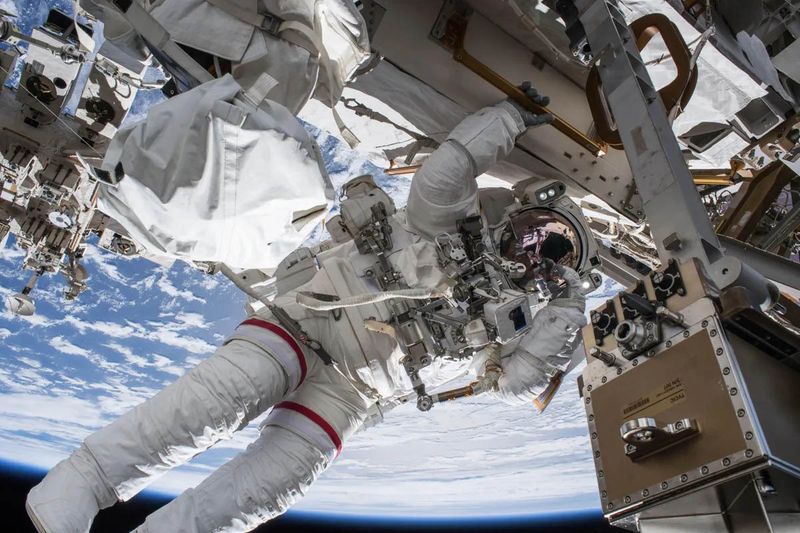
Why do astronauts spacewalk?
Astronauts go on spacewalks for various reasons. This could be to do science experiments to let scientists know how being in space affects different things. Astronauts do maintenance and repair works on the space station, shuttle spacecraft or satellites while spacewalking. By going on spacewalks, astronauts can fix things instead of bringing them back to Earth for repair. Spacewalks also let astronauts test new equipment.
Why is it so risky?
Spacewalking is considered the riskiest job of astronauts as they exit the relative safety of the space station and get into the void of outer space. Tethered to the ISS, they zip along with the space station that orbits the Earth at 28,000km/h.
Due to the pressurised resistance of the massive spacesuit, performing a spacewalk is not only physically demanding, but also mentally taxing. Astronauts must pay attention to their work as well as their safety, a large number of tools, interacting with the crew on board and with the team back in mission control, all while the clock is ticking. They need to be protected from radiations and temperatures ranging from -150 degree to 120 degree Celsius.
What makes spacewalks special?
For astronauts who have performed spacewalks, nothing comes close to the experience of spacewalking. The scene is matchlessly magnificent. Light and darkness flash by with the rapid alternation of day and night as they orbit the Earth every hour and a half. There is a distinct feeling of freedom and weightlessness. Spacewalkers are also treated to the smell of space.
How do spacewalkers stay safe?
When astronauts go on spacewalks, they are protected from the harsh outer space environment in their spacesuits called EMUs, known as the world’s smallest spacecraft and the ultimate in Personal Protective Equipment (PPE). The ISS EMU weighs 145kg while on Earth. Not only does the complex garment protect astronauts from the extreme conditions of space, it is in itself a mobile life support system with an oxygen supply, electrical power, water-cooling equipment, ventilating fan and an in-suit drink bag.
Astronauts put on their spacesuits several hours before a spacewalk. The suits are pressurised. This means that the suits are filled with oxygen. Breathing only oxygen helps prevent the gas bubbles in their body causing pain in their shoulders, elbows, wrists and knees. This pain is called getting “the bends” because it affects the places where the body bends.
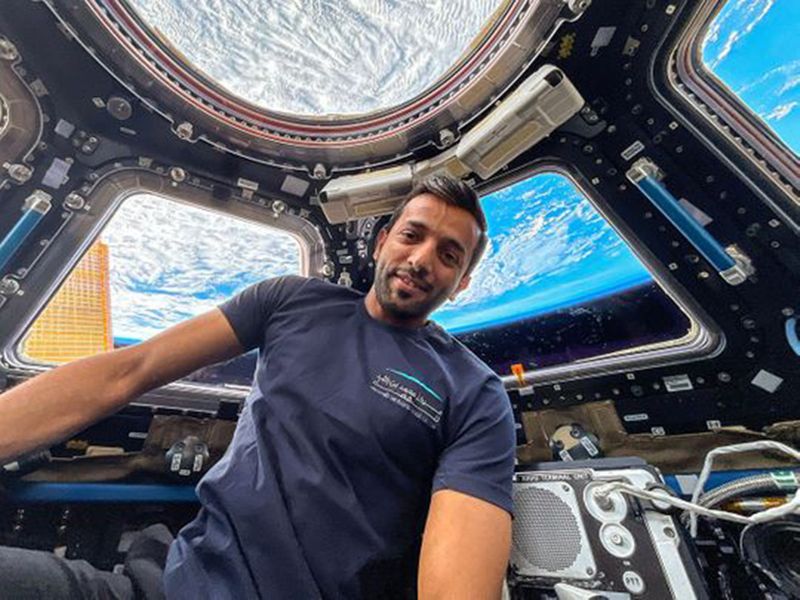
How can you identify Al Neyadi during the spacewalk?
When the two flight engineers of the Expedition 69 venture out of the ISS for the US Spacewalk 86, Bowen will be referred to as EV-1 in spacesuit with red stripes while Al Neyadi will be EV-2 in an unmarked, all-white spacesuit.
What tasks will they perform in spacewalk?
Theirs is the 261st spacewalk in support of space station assembly, maintenance and upgrade. The duo will work in the vacuum of space on the starboard side of the station’s truss structure of the ISS. They will retrieve a piece of communications equipment called a Radio Frequency Group (RFG) unit that’s due to be returned to Earth. They will also prepare the ISS for the installation of advanced solar arrays, which will occur on a future spacewalk.
What is the EVA RFG Retrieval?
EVA RFG Retrieval is one part of the spacewalk by the astronaut duo. During the spacewalk, they will retrieve an S-band Radio Frequency Group (RFG) antenna equipment, which enables communication with Earth, and bring it inside the space station for refurbishment.
Al Neyadi will be removing a multi-thermal insulation tent over the equipment. Bowen will be carried to the RFG unit by the station’s robotic arm. He will use a drill to unscrew the bolts to remove the hardware from the station. Both of them will then carry it to the station.
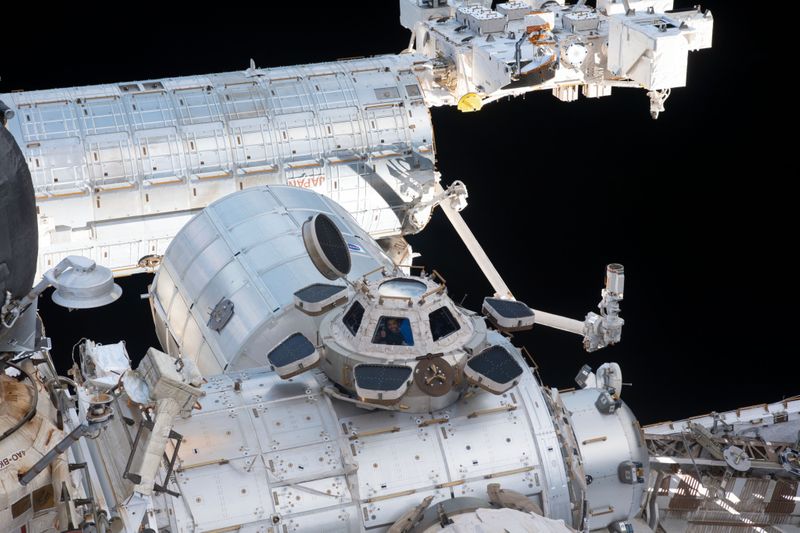
What is EVA for iROSA?
The spacewalk is part of a series to augment the station’s power channels with new ISS Roll-Out Solar Arrays (iROSAs). The duo will work on a series of preparatory tasks related to the solar array installation EVAs planned for later in the mission. This prepares cables for the future installation of upgraded solar arrays on the starboard side of the station’s truss. The cable work is being done in advance of the installation of the station’s fourth roll-out solar array. The iROSA is due to be delivered on the next SpaceX Dragon cargo mission in June.
What else will they do?
The duo will also rearrange foot restraints spread out on different parts of the station’s exterior for their own use and to facilitate the use by future spacewalkers.
APFR or Articulating Portable Foot Restraint (foot hold) is a restraint used for astronauts to anchor themselves to the outside of the space station and provides a stable hands-free platform to work from.
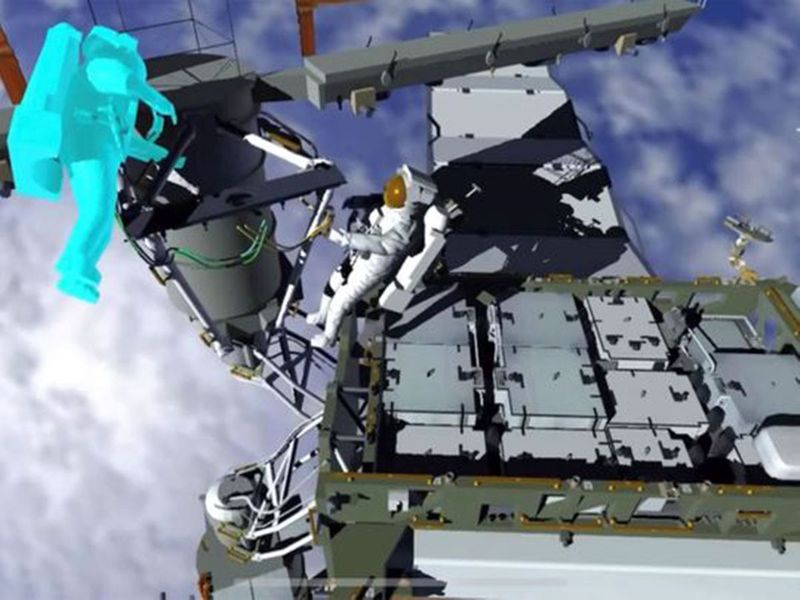
How did Al Neyadi prepare for spacewalks?
Al Neyadi had trained for more than 55 hours at NASA’s Neutral Buoyancy Laboratory (NBL) at the Johnson Space Center in Houston, US in preparation for spacewalks. During his time at the NBL, Al Neyadi underwent nine runs of six hours each, training underwater simulating spacewalks utilising the full mock-up of the ISS in the world’s largest indoor pool that holds 6.2 million gallons of water.
As part of the EVA preparations, the crew on Friday printed the robotics procedures for the upcoming ‘US EVA RFG Retrieval,’ and then participated in an EVA conference to review familiarisation products followed by a conference with ground specialists. Familiarisation products include the detailed timeline, a briefing package, configuration and tool notes, procedures, and additional data. A few days ago, Al Neyadi also wore a set of virtual reality (VR) goggles and trained for a variety of unlikely spacewalking rescue scenarios. NASA said the duo tried on and tested out their EMU spacesuits after configuring them. They have also been readying their tools for the spacewalks.
READ MORE
- Watch: Al Neyadi works on sending critical research samples from ISS
- Watch: Weighing in space? UAE astronaut shows how
- UAE astronaut Sultan Al Neyadi tells students: 'I like floating in space, like Superman, from one module to the other'
- Watch: UAE astronaut Sultan Al Neyadi runs on wall of International Space Station
Who is supporting this EVA?
NASA flight engineer Woody Hoburg will be the “Suit IV, the person who helps both Steve and Sultan get suited up in the morning and then help them doff their suits at the end of the day. He, along with NASA flight engineer Frank Rubio, will assist the astronauts in and out of their spacesuits and monitor their spacewalk.
When NASA astronauts conduct spacewalks, they rely on the Mission Control Center (MCC) at NASA’s Johnson Space Center in Houston to help them complete their tasks.
The UAE’s first astronaut and Al Neyadi’s back-up on this mission, Hazzaa Al Mansouri is the first Arab Increment Lead responsible for the seamless integration and execution of ISS crew activities including spacewalks.
The Mission Control Centre team at the MBRSC will also be coordinating from Dubai.
The UAE Astronaut Programme is one of the projects managed by MBRSC under the UAE’s National Space Programme and funded by the ICT Fund of the Telecommunications and Digital Government Regulatory Authority (TDRA), which aims to support research and development in the ICT sector in the UAE and promote the country’s integration on the global stage.
What are the specialities of this spacewalk?
• First spacewalk by Sultan Al Neyadi.
• First Emirati and first Arab spacewalk.
• Eighth spacewalk by Stephen Bowen.
• It is the US Spacewalk 86.
• It is the first spacewalk for Expedition 69.
• It is the fourth space station spacewalk in 2023.
Spacewalk jargon
• Egress—exit the ISS through the Quest Airlock
• Ingress—enter the ISS through the Quest Airlock
• EVA –Extravehicular Activity (spacewalk)
• EMU—Extravehicular Mobility Unit (spacesuit)
• BRT—Body Restraint Tether (cord)
• APFR—Articulating Portable Foot Restraint (foot hold)
• PGT—Pistol Grip Tool (drill)
• CLB—Crew Lock Bag (tool box)
• SAFER-- Simplified Aid For EVA Rescue (lifejacket device)




